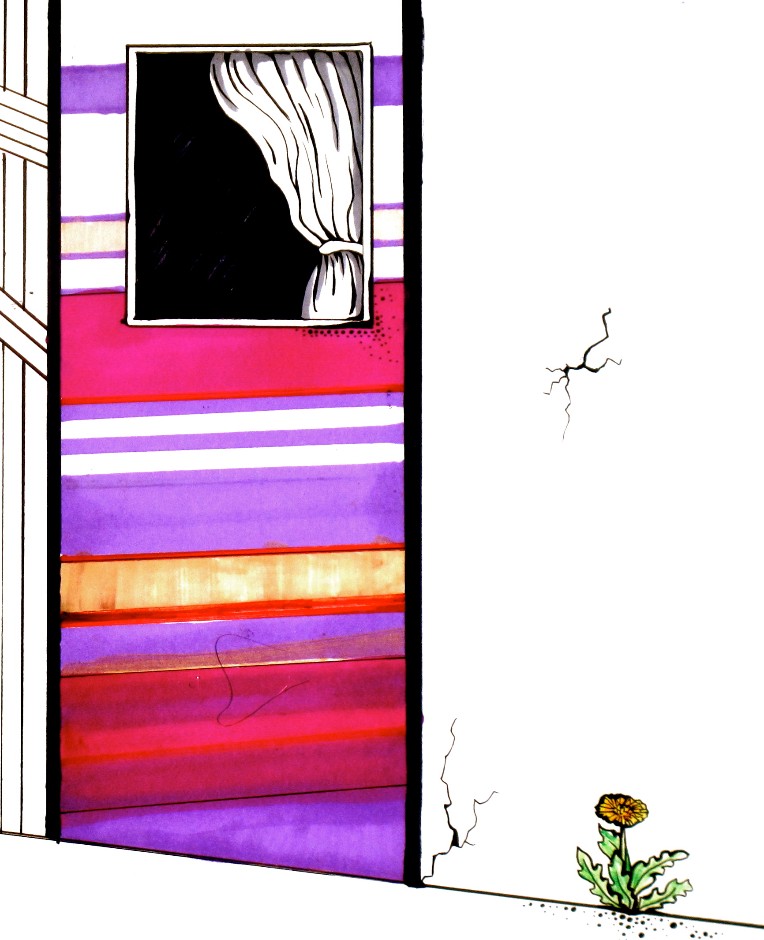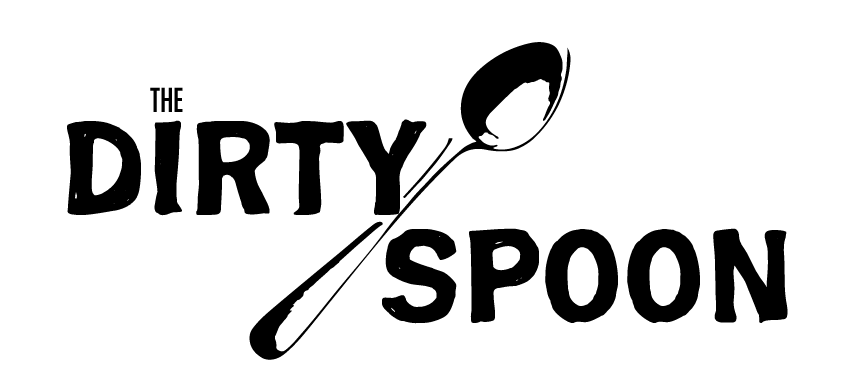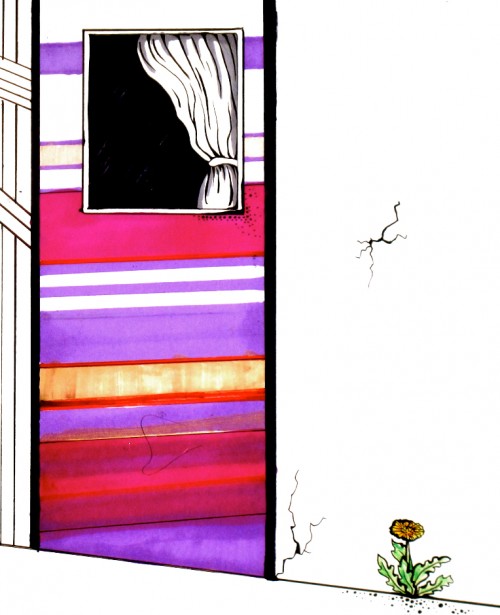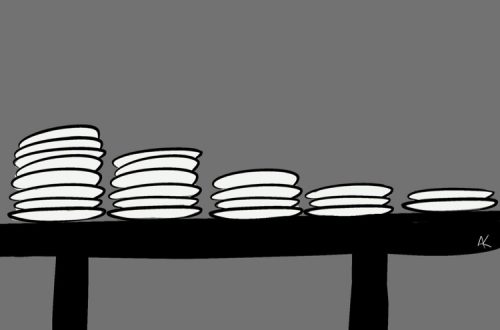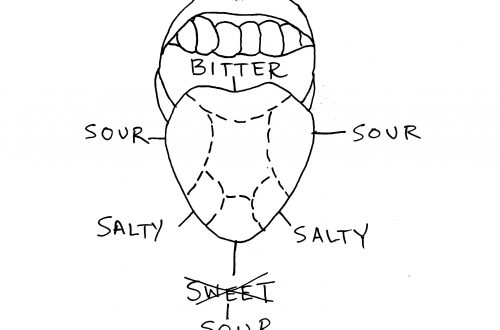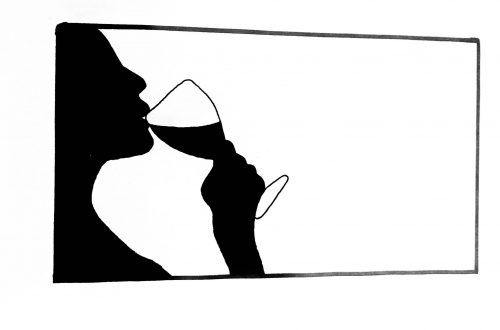by Jonathan Ammons
Dirty Spoon Miami Part 3 and Part 4 (Conclusion) aired on The Dirty Spoon Radio Hour on June 7, 2019.
The following is part three of a four chapter series. To catch up on Chapter One, click here. For Chapter Two, click here.
Blocks and blocks of vibrant pinks, blues, yellows, and greens flash by the car windows like a turning kaleidoscope. In both expanse and density, it’s breathtaking. The Wynwood neighborhood of Miami is like some grand experiment in the intentional development of an arts district. Endless stretches of murals and graffiti pop out like landmarks to signal where you are on NW 23rd, NW 24th St. and the main road of NW 36th St. as well as every alley and avenue in between. They’re tall, long, intricate works: everything from freehand to wheat pastes. Most of it maintains a Latino—and, in some cases, Catholic–influence, but there’s also a distinctive litheness to much of the work.
Muralists such as Trek 6 leave buildings posing as giant boom boxes, sometimes taking up entire cinderblock structures. The intoxicatingly dreamy works of Kazilla, Yok and Shero’s terrifying and delightful creatures with dozens of eyes floating in blood red rivers, Chor Boogie’s mosaic-meets-fresco mash-ups, and Eoin’s tribal scripting scrawled across endless blocks. The neighborhood art is alive, and seems to move and shake around you on this average Wednesday night.
Wynwood was first established by two major land owners in the early 1900’s, one of whom was Josiah Chaille, a City Councilman who was actually the guy responsible for developing the numerical naming system used for the roads in Miami. But by the end of World War II, the downtown City of Miami was starting to pick up steam, and Wynwood sucked up like a dry vein while the masses flocked to high rise towers and promising city lights to the south.
As rent prices fell, a mass of Puerto Rican immigrants found their way into the neighborhood and by the 50’s, Wynwood had developed the name “Little San Juan” nearly a decade before the Orange Bowl transformed into Little Havana. That demarcation would represent the first major Latin American community in Miami, and Wynwood would become the icon on which the Cuban district, and Little Haiti would model themselves. Names shifted: Wynwood Park was renamed Roberto Clemente Park, and the schools were changed to reflect the new Puerto Rican culture that filled the halls.
During the sixties and seventies, the area became famous as a clothing manufacturing district, building tall, windowless factories for high fashion brands. But by the 80’s, much of the manufacturing industry had moved overseas for cheaper labor. At one point there were over 225 retailers in the area garnering over $64 million a year. But as the factories moved out, so did the jobs.
That outflow of workers left empty homes and vacant businesses. Combined with a reputation for drug trafficking and high crime, by the end of the 80’s Little San Juan had become more known for its abandoned buildings than the thriving industry that built it.
Then, in 1987, the old Flowers Bakery warehouse was purchased. It reopened as a 2-acre artists’ compound called the Bakehouse.
**
Off 25th Suzi spots a courtyard with four-story former manufacturing buildings entirely covered in paintings. The Wynwood Walls. We are lucky enough to have ignorantly stumbled upon them. It’s dark, so the massive streetlights illuminate what turns out to be an entire city block of the town, outdoors, with floor to ceiling murals on massive brick and cinder block.
Miss Van’s delicate and sensual “Poupes” stretches the length of one building: masked figures, flowing furs and bare breasts, with animal horns and vibrant colors of hair. Hailing from France, Miss Van is one of dozens of artists flown in from around the world to take a wall and fill it with something beautiful.
The brainchild of real estate mogul Tony Goldman, the Wynwood Walls were a vision of preservation for the City’s warehouse district, utilizing the large windowless walls to showcase artists from around the world. Goldman is also known for doing this same kind of thing in SoHo in New York, and Philadelphia’s 13th street, preserving what is there, and turning it into a showcase for artists. Wynood Walls began in 2009. In 2012, Goldman passed away, managing to get a mere glimpse of his dream for Miami. And to see it yourself is breathtaking. I almost choke up watching a family marvel at the works, their child dwarfed standing at the foot of a massive mural, his eyes glistening with wonder as his mother snapps a photo on her iPhone in the waning light.
On the long wall at the entrance, Swoon’s epic wheat-paste collage of a woman feeding her child becomes more nuanced with each step closer to it. Within each character of this large scale piece are smaller characters, windows into smaller scenes. I study the pensive side portrait of an older, bearded man: inside of him are scrawlings and sketches of his younger self, helping a friend, sitting posed with a family. Strange creatures peer out from the cracks, and smiling faces peak from the corners with curiosity.
DALeast, a Chinese artist based in South Africa, contributes a piece covering a large garage door in a yellow backdrop with two wolf-like creatures—they unravel before our eyes, settling into what looks like spindles of metal and shrapnel uncoiling towards one another. Nearby, DALeast’s wife, South Africa’s Faith 47, leaves her mark with an equally beautiful and harrowing portrait of a tiger in hunt. Meticulously hand painted shadows reveal the creature with its head bowed, mouth pursed, and eyes keenly focused ahead. Long drips of paint trail all the way to the floor in sharp contrasts of grey scale, and in the dim and spot-focused light, it appears to be stalking through the rain upon its prey.
At one end of the block sits Wynwood Kitchen & Bar, where one can rest in the patio. The art is equally opulent inside, with a floor to ceiling Shepard Fairey mural behind the bar, a red and black elephant, his famous dove, and a pattern of his Obey posters.
“Let’s just eat here!” Suzi suggests, and I agree. It wasn’t on our master list, but so far she’s been a far better predictor of enticing entertainment than I have.
Opened in 2010, Wynwood Kitchen & Bar cranks out Latin-inspired tapas to a sprawling dining room and even more massive patio full of hungry art-seekers. Chef Miguel Aguilar — not to be confused with the Brooklyn chef of the same name featured on the series Chopped — moved to Wynwood K&B from Philadelphia, where he’d cooked for Doug Rodriguez’ Alma de Cuba before helping to open Stephen Starr’s El Rey.
The menu is large and sprawling and I leave the ordering to Suzi as I’m feeling a little more low key than usual. This proves to be a wise decision. She starts us off with the Ropa Vieja Empanadas; 3 crispy flour tortillas stuffed with marinated chicken and dipped into a cilantro crema. Next comes the Caldo Gallego, a traditional Galician soup of white beans, chorizo, collard greens, parsley and tomatoes, served in a rich stock. It’s deep and flavorful, and the collards and white beans play really well together. Following are pan seared scallops with those same delicious crispy triangular polenta cakes that we saw during breakfast at Versailles. And lastly arrives the seared duck breast with carrots, peanuts, cilantro, and a citrus-infused soy sauce.
We see a lot of repetitive themes throughout the menus in Miami, all of them brimming with Latin and Spanish impact. Hints of a familiar seasoning that somehow transcend their influence. Yes, these dishes may have landed here from ancient Spain, the Cuban revolution, and Haitian or Puerto Rican tradition, but those same influences, like the chefs who created them are in a very different place now. They are in a thriving metropolis of five million people. There is a distinct implication that although these dishes and the people that make them may be from somewhere else, they are all very much at home here in Miami.
It is important to point out that, according to The New Tropic, after Goldman’s investments, “the area blossomed practically overnight, with rents tripling to $60 per square foot in less than three years.”
This made it nearly impossible for most of the local artists to afford gallery or studio space in the very neighborhood they helped to build.
So where does a struggling artist go when their home turf pushes them out?
**
In 2013 Camila Alvarez and Natalie Edgar released Right to Wynwood. This beautifully produced, short documentary that began as a student project about the gentrification of the neighborhood over a very short decade. It is a pointed blade aimed at the developers in the area. A particularly startling set of interviews frame David Lombardi, one of Miami’s most prolific developers, at his office, perched at his desk, in front of a mural of a cigarette boat hurtling through blue waters.
“I like to say that I took chicken shit and made chicken salad,” says David Lombardi on camera. “I had a building on 29th street, and there were drug dealers, there were prostitutes… I bought it because it was part of an assemblage of what I needed to buy. And I decided, I’m going to tear this building down, because it was cheaper to have it as a lot than it was to continue the way I was going. I walked in the building one day and told the tenants, I’m tearing this building down and you’re all going to have to get out. And they said ‘Fuck you! You’re not tearing this building down, you’re full of shit!’ They were all stoned. And the next day, I delivered a backhoe in front of the building… I parked it there as an omen for them… and the morning I got the permit, I had the neighborhood policemen come and knock on every door and tell them that they had one hour to get out. And they all stood on the sidewalk with their belongings in their suitcases looking like ‘He did it.”
David laughs to the camera. “And I went by and of course I gloated and wished them all well on their future endeavors.”
Three years later, the lot still stands empty, a large fence surrounds the trash laden property.
After Right to Wynwood was released, David was furious. “I really try not to let the criticism affect me,” Lombardi later told WLRN. “The people who have been long-term residents here who chose to move on, whether it was because they got a large amount of money for their longtime family house, that’s their decision to do so. If others got forced out of rentals because the developer bought it and tore down the building, when he buys the building he can do as he wishes. So, you know, I think it’s just the course of doing business, there’s nothing new to it. …This has become my life’s work, this neighborhood of Wynwood, so you know, when a film like the one you mentioned came out, it was like a personal attack to me. It’s insulting.”
Gentrification is a normal thing. But “gentrification in Wynwood was developer-led, rather than being artist-led,” Alvarez told me. “It was more aggressive and faster because the developers brought a business plan and used art/artists as a marketing tool. Artists didn’t really live there before the developers conquered the area. Only a few art-related places were there, like the Bakehouse Art Complex and a few galleries owned by wealthy people, but gentrification was not an organic process.”
When Goldman began his process, he noticed that small pocket of artist collectives and decided to capitalize on it, commissioning artists from outside the city, and establishing the Wynwood Arts District Association to transform the neighborhood into an intentionally developed arts center rather than the slowly evolved districts of Chelsea or LA.
As rents continue to rise, it becomes more and more impossible for artists to open studios, or generations of families to stay in their rented homes. It shouldn’t be surprising that the tagline for the Wynwood Walls is “Here comes the neighborhood,” as though there wasn’t a nearly hundred year old neighborhood there before Shepard Fairy wet his roller for his first wheat paste.
“Goldman is a professional neighborhood gentrifier. He makes an art of knowing how to buy in bulk properties in neighborhoods that have all the potential to become the latest hip cultural zone of the City. He did it in New York, in Philadelphia and he did it in South Beach,” Marcos Feldman, an Urban Sociologist at FIU, told Alvarez and Edgar. “If the artists get priced out in the areas where the gentrification is actually artist led, just imagine what happens when it’s not artist led.”
The Miami Herald recently announced a ridiculous new planned development on the main drag through the district. The massive 9 million square foot proposal looks more like an outdoor shopping mall or set from the Capitol in the Hunger Games than a viable cityscape, and is a stark contrast from the gritty urban edge that makes Wynwood iconic.
**
>> Like what you’re reading? Here’s your soundtrack: check out the Dirty Spoon Miami Spotify playlist.
At the border between Little Haiti and Wynwood, you’ll find the Design District, where massive ads for designer labels reach up to the heights of the towers of fashion, art galleries, and high end apartments. Here, restaurants like Michael’s Genuine are catering to a newer, more polished north end of Miami.
Opened in 2007 by James Beard winning chef Michael Schwartz, Michael’s Genuine boasts a wood fired oven and an array of small plate offerings from a mostly Italian inspired menu. Ingredients are staunchly and aggressively farm-to-table, and seem to come mostly from regional growers. The luxurious 110-seat dining room is matched by an equally sprawling patio, tucked in the alley between a designer store and an art gallery. But stuffed to the gills as we are, we settle for a carafe of wine and a seat at the bar to people watch and listen to the crack of the oyster shells as the shucker prepares his raw bar.
It’s pretty here. It’s glossy. Outside there’s an installation by Paula Crown called Transposition: Over Many Miles, where large, glowing fabrics pop up from the concrete like icebergs. In the midst of it all, it could be easy to forget that this is the second step of gentrification. The slow creep of the Wynwood allure into the corners of Little Haiti.
I am sure there are those that are a little less than enthused watching the slow, ivy-like creep of the arts district into their backyards. But there is almost a built in resistance for Little Haiti. “It is very different in Wynwood,” Alvarez told me, “Wynwood didn’t really have a solid community like Little Haiti, or Little Havana do. It used to be a Puerto Rican neighborhood back in the day, but then it became more mixed and fragmented. This lack of identity was one of the causes why they were never politically active or organized, and why they never fought gentrification. When the developers called meetings to change the zoning, or anything similar, nobody would show up, because nobody knew, they were not active. So it was a lot easier for developers to fabricate their commercial playground.”
That sandbag seems to be holding the waters at bay for now, but it’s only a matter of time before they start to rise. And that can be concerning for the Haitian community, particularly folks like Serge Toussaint, a man regarded by those long term residents of Little Haiti as the artist in the community.
With hundreds of iconic murals covering the neighborhood, Toussaint has been covering walls in colorful art since 1994, and has been a vital force in developing the truly other worldly feel of the neighborhood. What began as a favor to his uncle, painting his sign in mural form, became a full time job for the Haitian native when he was asked by neighbors to develop signage for their stores.
Though he may be most famous for his mural of the Miami Heat, his depictions of “The Haitian Heroes” on 54th St., a hand painted map of Haiti in Little Haiti Park, and the unmistakable Piman Bouk Bakery signage are just a handful of the hundreds of works he’s crafted over the years, part advertisement, part work of art: always depicting the story of the shop or restaurant, it’s owners and their heritage.
“Wynwood artists creeping into Little Haiti should respect the neighborhood’s artistic identity. I don’t have any problem with all the artists,” Toussaint told WLRN, standing in front of his two story masterpiece of the founding revolutionaries of Haiti’s Independence. “But if you come into my community… you have to mingle your artwork with something that’s related to Haitians.”
“A lot of good artists started moving to Little Haiti when they realized the scheme behind Wynwood,” explains Alvarez. “Many others were priced out and ended up over there as well. I think that it is a more organic migration. Artists are the first wave of gentrification. They move to places looking for cheap rent, for big, cheap spaces where they can work, and Little Haiti is a good place for that, since it’s still close to the downtown/midtown area, but it’s considerably cheaper.”
There’s an abundance of color in Miami. No matter what neighborhood you find find yourself wandering through, you are sure to be engulfed in endless seas of red, white, and blue. Flags, streamers, the graffiti of buildings, all of it displaying some strange homogeneity. In fact, from the window of a passing car, it becomes hard to tell whether the colors are there to represent the United States, Haiti, or Cuba, but I believe that in reality, they are there to represent all three. In a city of so much endless diversity, where foods, cocktails, languages, clothes, and skin colors seem to rub off on one another at the faintest of crossings, it is also apparent that those integrations are often less willful than they are necessary. No matter how old or strong your sense of place may be in your neighborhood, if someone with more money takes an interest, how much longer will it be your neighborhood?
Join us for the fourth and final installment of Dirty Spoon Does Miami, when we visit Miami Beach here.
